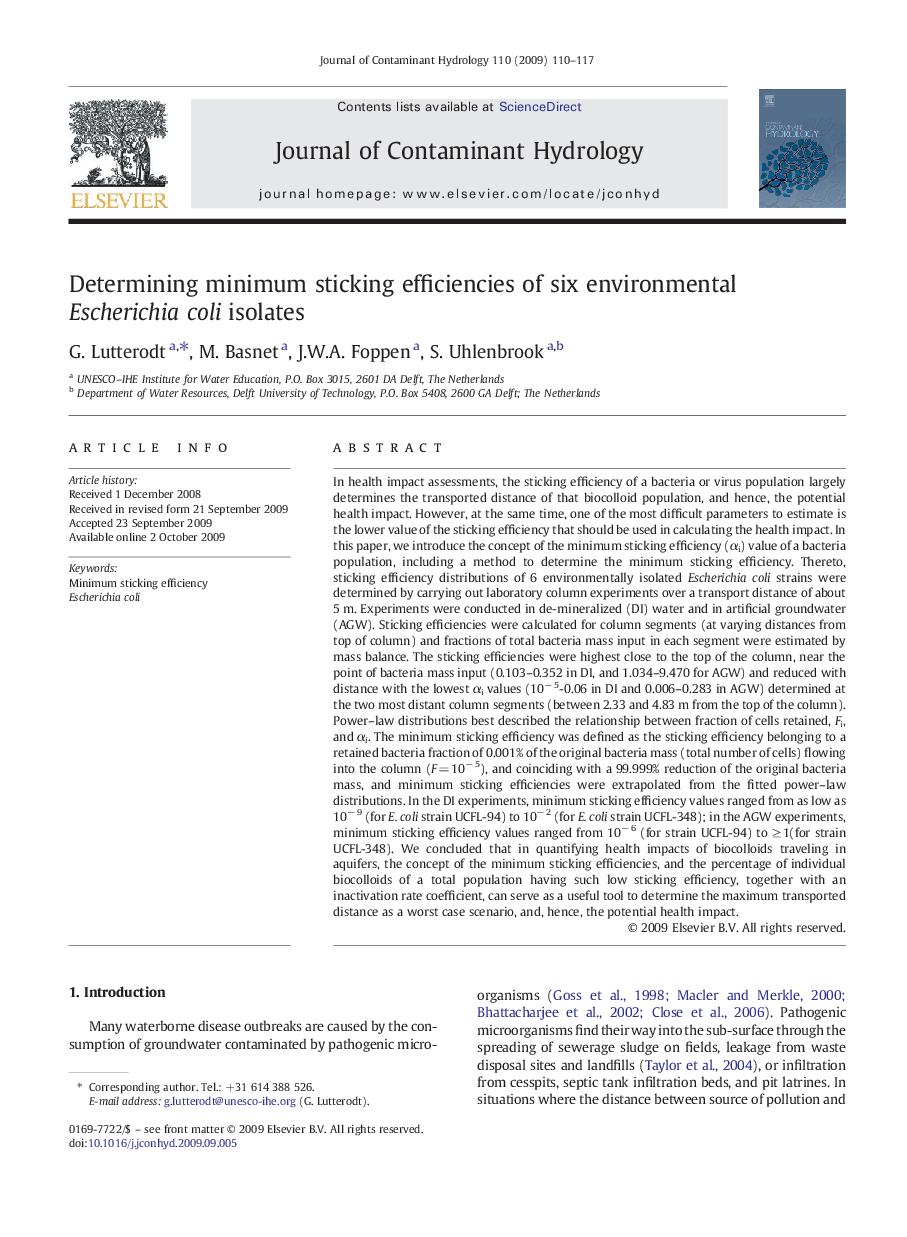| کد مقاله | کد نشریه | سال انتشار | مقاله انگلیسی | نسخه تمام متن |
|---|---|---|---|---|
| 4547162 | 1627092 | 2009 | 8 صفحه PDF | دانلود رایگان |

In health impact assessments, the sticking efficiency of a bacteria or virus population largely determines the transported distance of that biocolloid population, and hence, the potential health impact. However, at the same time, one of the most difficult parameters to estimate is the lower value of the sticking efficiency that should be used in calculating the health impact. In this paper, we introduce the concept of the minimum sticking efficiency (αi) value of a bacteria population, including a method to determine the minimum sticking efficiency. Thereto, sticking efficiency distributions of 6 environmentally isolated Escherichiacoli strains were determined by carrying out laboratory column experiments over a transport distance of about 5 m. Experiments were conducted in de-mineralized (DI) water and in artificial groundwater (AGW). Sticking efficiencies were calculated for column segments (at varying distances from top of column) and fractions of total bacteria mass input in each segment were estimated by mass balance. The sticking efficiencies were highest close to the top of the column, near the point of bacteria mass input (0.103–0.352 in DI, and 1.034–9.470 for AGW) and reduced with distance with the lowest αi values (10− 5-0.06 in DI and 0.006–0.283 in AGW) determined at the two most distant column segments (between 2.33 and 4.83 m from the top of the column). Power–law distributions best described the relationship between fraction of cells retained, Fi, and αi. The minimum sticking efficiency was defined as the sticking efficiency belonging to a retained bacteria fraction of 0.001% of the original bacteria mass (total number of cells) flowing into the column (F = 10− 5), and coinciding with a 99.999% reduction of the original bacteria mass, and minimum sticking efficiencies were extrapolated from the fitted power–law distributions. In the DI experiments, minimum sticking efficiency values ranged from as low as 10− 9 (for E. coli strain UCFL-94) to 10− 2 (for E. coli strain UCFL-348); in the AGW experiments, minimum sticking efficiency values ranged from 10− 6 (for strain UCFL-94) to ≥ 1(for strain UCFL-348). We concluded that in quantifying health impacts of biocolloids traveling in aquifers, the concept of the minimum sticking efficiencies, and the percentage of individual biocolloids of a total population having such low sticking efficiency, together with an inactivation rate coefficient, can serve as a useful tool to determine the maximum transported distance as a worst case scenario, and, hence, the potential health impact.
Journal: Journal of Contaminant Hydrology - Volume 110, Issues 3–4, 20 November 2009, Pages 110–117